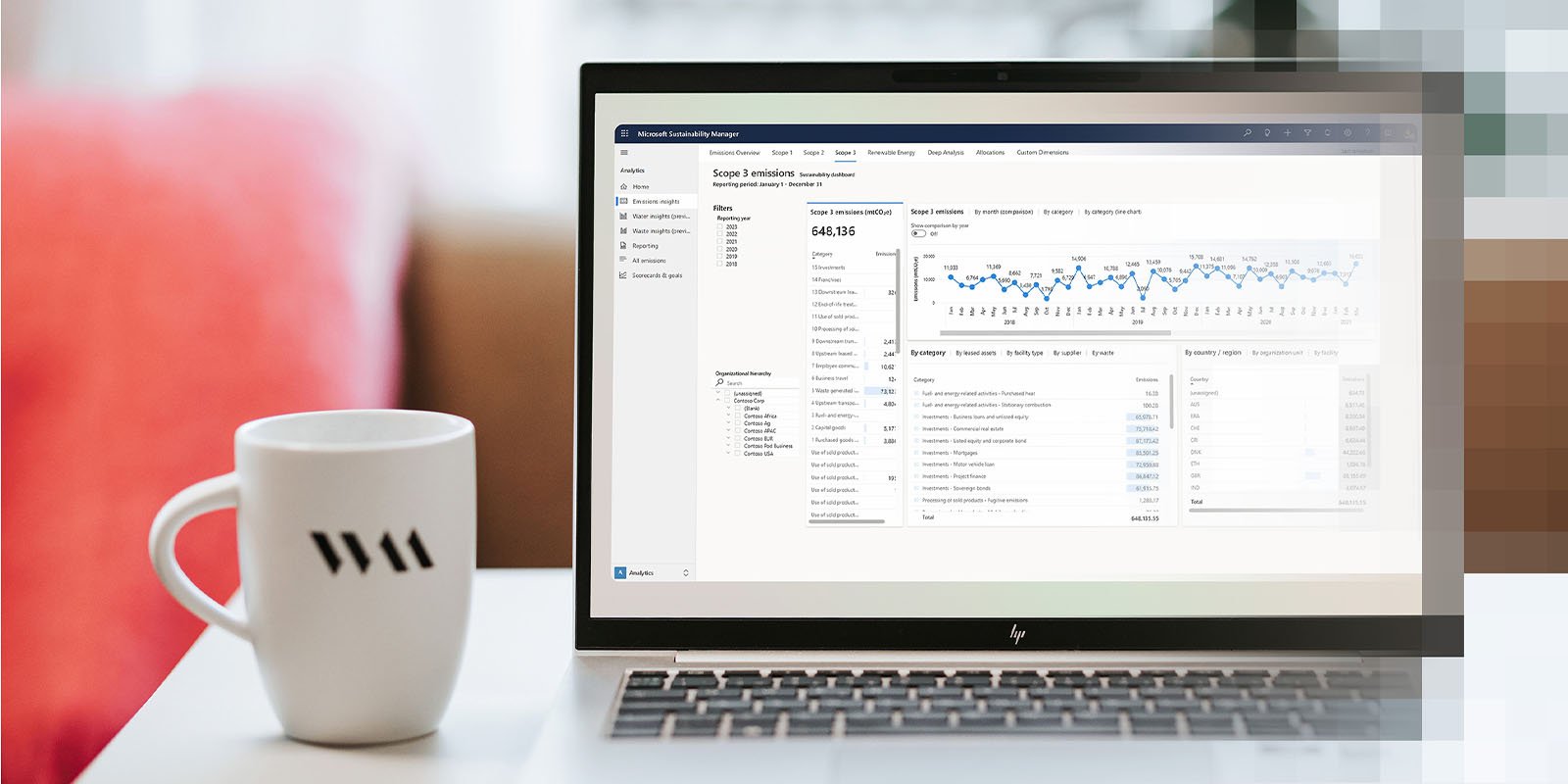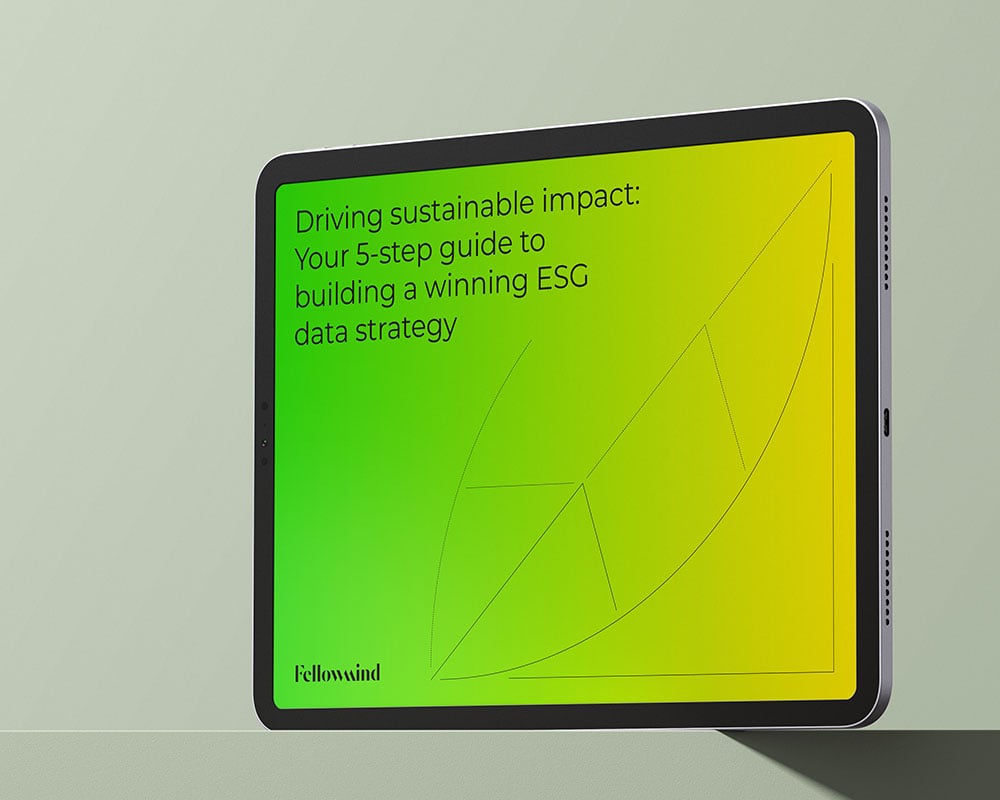Unveiling the potential of the Microsoft Cloud for Sustainability
In the current IT landscape, where data is often scattered across multiple systems (or "silos"), many companies struggle to gain actionable insights necessary for making informed decisions and ramping up their sustainability impacts. The massive amounts of data that need to be structured and analyzed can overwhelm organizations, creating bottlenecks that hinder progress. However, when leveraged effectively, ESG data can do more than just fulfill reporting requirements—it can unlock valuable insights that drive innovation and operational efficiency simultaneously as it becomes more sustainable and drives greater impact. The important question is: how do you do that?

Microsoft offers numerous capabilities and digital support through its Cloud for Sustainability platform. The Microsoft Cloud for Sustainability breaks down these silos, providing Sustainability Directors, managers, and upper management with a unified platform that offers real-time insights, automates tedious manual tasks and makes the otherwise overwhelming workload manageable.
These capabilities are crucial as organizations strive to comply with new regulations like the EU Corporate Sustainability Reporting Directive, CSRD, which require accurate and comprehensive sustainability reporting as well. as they embark on their journey to drive more sustainable business with better impacts on the society around them and the planet as a whole.
At Fellowmind, we piloted a proof-of-concept project with steel tubular product manufacturer OSTP and Microsoft, using the Sustainability Manager, in the Microsoft Cloud for Sustainability. The project was a success and we were awarded a global finalist spot in the ‘Sustainability Changemaker' category in Microsoft’s Partner of the Year Awards 2024, demonstrating Microsoft’s Cloud for Sustainability essential role in helping companies gain a clear picture of their environmental impact.
But what exactly is the Microsoft Cloud for Sustainability, and why is it a game-changer for companies striving to meet sustainability goals?
Empowering Your Organization
The Microsoft Cloud for Sustainability is a transformative platform designed to empower your organization to take decisive action toward achieving your sustainability goals. At its core, Microsoft Cloud for Sustainability does a lot of things; it unifies data intelligence, enabling businesses to streamline their ESG data collection, run complex calculations, and generate required reports, but foremost, it provides insights on the performance of your sustainability efforts. It also significantly enhances Environmental, Social, and Governance (ESG) data transparency, which is crucial for companies aiming to improve their sustainability efforts.
In this blog post, we will unveil the essential solutions in the Microsoft Cloud for Sustainability’s wide range of capabilities, starting with the Sustainability Manager.
Gain full visibility into your environmental impact
The Sustainability Manager is a crucial tool for actionable insights that provide a comprehensive solution for managing and optimizing your environmental impact. With its full carbon emission coverage, the Sustainability Manager enables precise calculation and reporting across Scope 1, 2, and all 15 Scope 3 categories. It also offers robust water and waste data management capabilities, allowing for efficient calculations, visualization, and reporting. The platform automates and scales processes, supporting data ingestion from manual, Excel, pre-built, or customized connections to available sources. Additionally, it streamlines operations with standardized templates and user guides built on comprehensive data models.
Work faster and do precise calculations with AI
We can’t escape bringing up artificial intelligence when discussing next-gen sustainability technology, as it has vast potential to reduce workflows. The latest capabilities in the Microsoft Cloud for Sustainability include AI-powered tools like Copilot within the Microsoft Sustainability Manager, which allows users to quickly analyze environmental data and surface reduction opportunities through natural language queries. This feature significantly reduces the time and effort required to analyze sustainability data, making it easier for companies to identify and act on carbon reduction opportunities.
Moreover, Copilot's advanced AI capabilities extend to creating precise calculation models for various emissions sources. For instance, AI can handle complex scenarios, such as adjusting calculations based on transport modes and distances, and it dynamically populates fields with specific details like emission sources, factors, and equations. By automating these calculations and leveraging conditional statements, Copilot streamlines the process, enabling more accurate and efficient sustainability management.
Comprehensive ESG Data Management
Microsoft has also launched Sustainability Data Solutions in Fabric, an end-to-end data management and analytics solution designed to unify sustainability data across an organization's entire operation. With Microsoft Fabric, businesses can seamlessly ingest, harmonize, and analyze ESG metrics, enabling them to manage diverse data sets effectively and address specific sustainability challenges with tailored insights. These powerful capabilities are a game-changer for organizations looking to centralize and manage their sustainability data.
Streamlining Sustainability Reporting
As a key component for reducing the workload on your organization, Microsoft Sustainability Reporting (Project ESG Reporting) simplifies and streamlines the process of ESG reporting, reducing complexity and enhancing efficiency while ensuring greater transparency. The solution supports both quantitative and qualitative metrics, allowing your organization to create, complete, and approve ESG disclosures across various standards and frameworks, such as CSRD, GRI, IFRS, and SASB.
With built-in approval and audit workflows, it ensures compliance and data accuracy. The Microsoft Sustainability Reporting (Project ESG reporting) also offers extensibility for custom templates and integrates seamlessly with Microsoft Sustainability Manager for simplified data management and streamlined reporting processes.
Data Collection, Audit Readiness, and Risk Management Made Easy
Get ready for the Corporate Sustainability Reporting Directive (CSRD) with Microsoft Purview Compliance Manager. This solution simplifies compliance by offering prebuilt templates aligned with major ESG reporting standards, enabling you to track actions, document evidence, and manage complex workflows. Navigate CSRD requirements, compile data from multiple sources, and visualize metrics against disclosure standards. The platform also helps you take inventory of data protection risks and ensures your reporting is audit-ready. You can also invite auditors to review and comment on your metrics data, staying up-to-date with evolving regulations and certifications.
Track your emissions related to Microsoft Azure and Microsoft 365 usage
Azure and Microsoft 365 Emissions Impact Dashboards are vital tools for businesses aiming to track and optimize cloud-related emissions. These dashboards offer detailed insights into greenhouse gas emissions from cloud services, empowering companies to make informed sustainability decisions. The dashboards, available through Power BI Pro, provide transparency into emissions associated with cloud usage and support data integration for accurate carbon accounting. You can track direct and indirect emissions, estimate avoided emissions from migrating workloads to the cloud, and access your data via the Microsoft Cloud for Sustainability API.
Expected Outcomes
The advantages of adopting the Microsoft Cloud for Sustainability are numerous. Your company can expect a reduction in its environmental impact through optimized operations and the creation of sustainable value chains. This includes everything from responsibly sourcing materials to optimizing product logistics, ultimately ensuring a smaller carbon footprint across the entire operation.
Moreover, the platform is designed to be sustainable by nature. By moving workloads to the cloud, companies can benefit from Microsoft's extensive investments in renewable energy. This makes the cloud between 72% and 98% more carbon-efficient compared to traditional data centers.
When you start using the Microsoft Cloud for Sustainability, you can also achieve greater transparency in your sustainability reporting, drive innovation with sustainable products and services, and foster a culture of sustainability that resonates with customers, investors, and the broader community. This isn’t just about compliance; it's about taking a leading role in the urgent task of building a more sustainable future.

Ramp up your sustainability digitization journey with a QuickScan
To ensure you take the right next steps in your sustainability journey, we offer a QuickScan to help you better understand your company's current maturity and how well-prepared you are to comply with sustainability-related regulations, such as the CSRD reporting.
During the QuickScan, we assess several crucial aspects of sustainability and your ESG data estate. Ultimately, you will have a personalized ESG digitization roadmap based on Microsoft technologies and an action plan containing concrete next steps in your sustainability journey. With our help, you can discover the true business value of ESG data beyond compliance.





